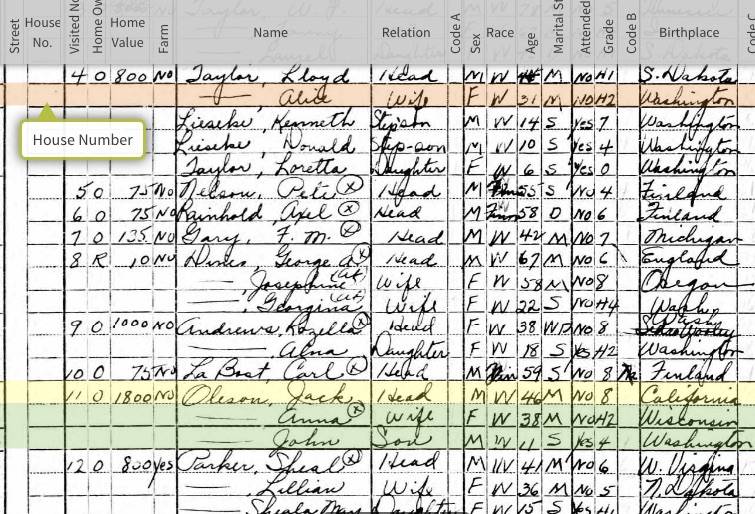By Christi Baron
The United States Census is a decennial census mandated by the United States Constitution. The population is enumerated every 10 years and the results are used to allocate Congressional seats, electoral votes, and government program funding. The census is performed by the United States Census Bureau.
The first census after the American Revolution was taken in 1790. The 2020 census began in April and the count is coming to an end very soon. The census is not only a tool to be used for funding, representation, and voting but for anyone researching genealogy it is a snapshot in time that can reveal that we are the sum of the people that came before us, our ancestors.
For the first six censuses, from 1790 to 1840, enumerators recorded only the names of the heads of the household. Beginning in 1850, all members of the household were named in the census. The Census data of the late 19th century also included agricultural and industrial schedules to gauge the productivity of the nation’s economy.
Later census information included mortality schedules, reveling life spans, and causes of death throughout the country. The 1900 census included a column for the number of children born to a woman and a column for the number living at the time of the census. Many times the number of children who did not survive was shocking.
In 1880 the tenth Census estimated the population of the United States at 50,189,209. This was the first census that permitted women to be enumerators. Many times enumerators had a difficult job. They were dealing with a country full of new immigrants with accents, strange names with too many letters, names sometimes got misspelled.
The census is also a wealth of information for genealogy research. Where once researchers had to spend hours looking at microfilm. Available census records are now indexed and searchable on many websites.
The US Indian Census was taken locally from 1885-1940. The Makah, Ozette, Quileute, and Hoh tribal members were indexed by their Indian name and their “English” name which they were encouraged to take.
The 1900 census shows that my great-great-grandmother, Anna Rovik, of Washburn, Wisconsin was born in Norway in 1854 she is a widow raising four children on her own, she had taken in two borders probably to make ends meet and her two oldest daughters are working as servants and the two younger children are in school.
The 1910 census has the year of my great-grandparents Hans and Christine Olsen’s immigration from Denmark as 1890.
Since my great-grandfather came to the US first this means my great-grandmother crossed the Atlantic on a steamship with four children ages six, five, three, and one year old.
The 1920 census has information that my great grandparents Jacob and Elizabeth Schauer, were born in Russia but spoke German, own their home in Quilcene and they operated a general farm. My grandmother is nine years old, and they are all able to read and write.
The 1930 census shows my grandparents Jack and Anna Olsen live at Mora, WA, own their home, own a radio and my grandfather’s occupation is mechanic. My grandmother’s sister Nellie Kinney is living with them and my dad is one-and-a-half years old.
The 1940 Census shows the Olsens are still residing at Mora in the Quillayute Precinct. My grandfather was now working as a timber faller. My dad was now eleven years old and they list him as John, not Jack and Olsen is spelled Oleson …Their home is valued at $1,800, and their closest neighbors are the Parker family.
The 2020 census questionnaire arrived for some in mailboxes in March. There is a seventy-two-year privacy law for the census, so information for this census will not be available for public view until 2092. I can comfortably say, I think, that none of us will be around to worry about our information getting out!
You can still do the census …census workers are out and about …you can go online at 2020census.gov or by phone at 844-330-2020. If you have not done the Census please do it today!
If we take more time to learn about where we came from we might take more pride in where we are going. Whether your ancestors were born here or came for a better life, Russian, Danish Norwegian, German, or Quileute our family’s stories are in the census.



